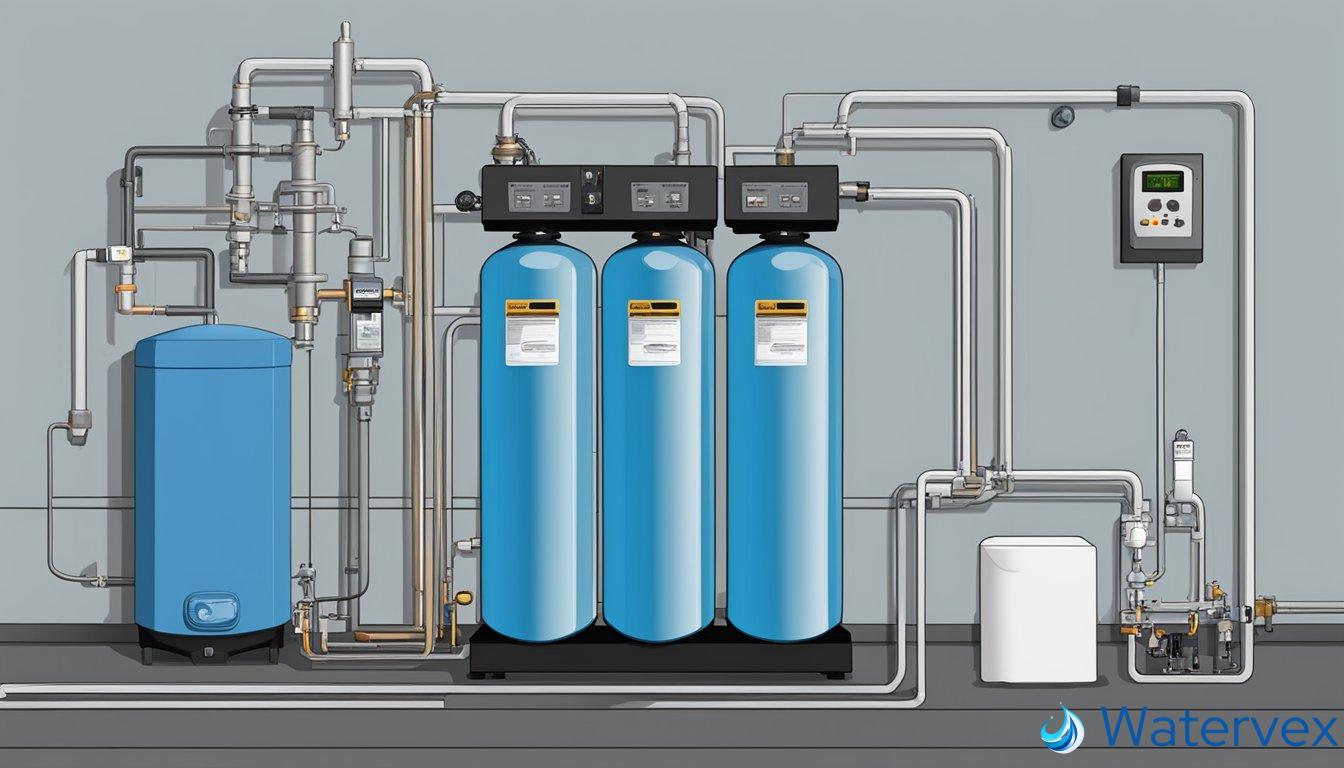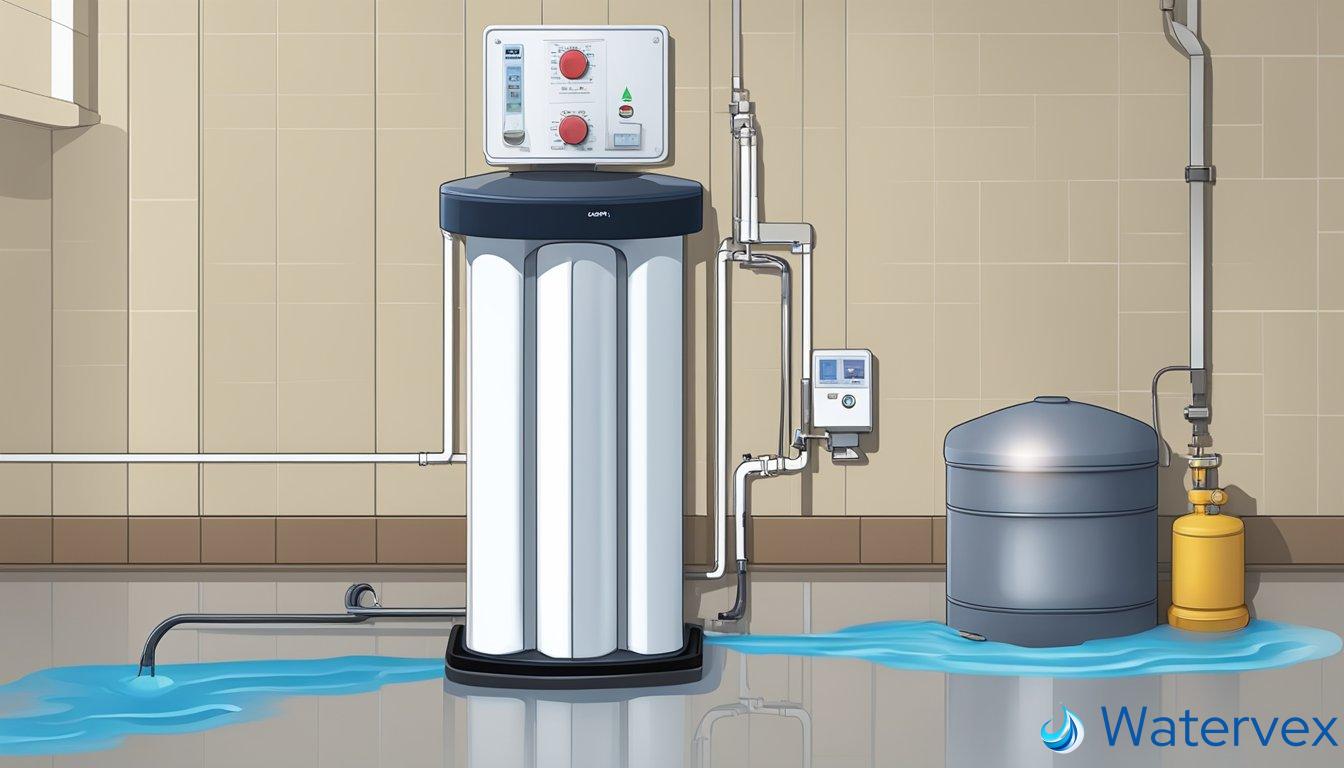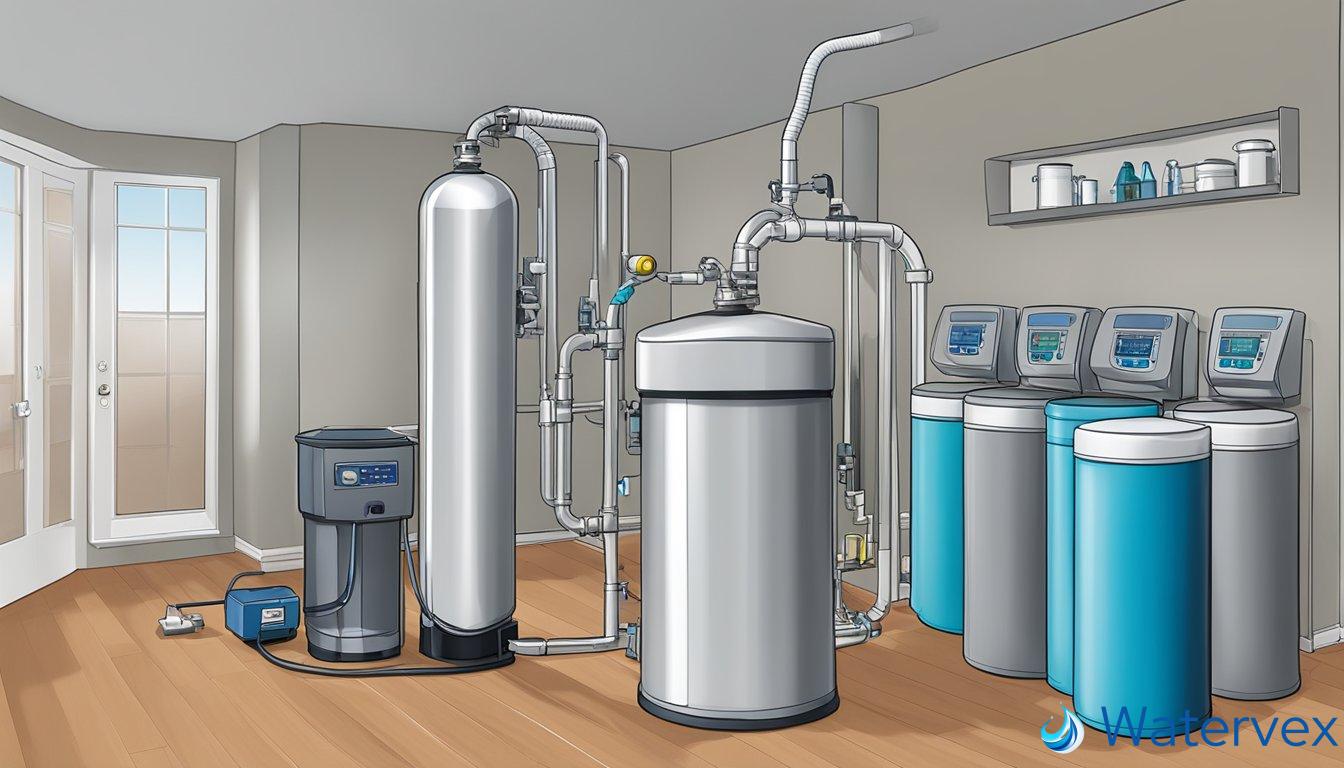When a power outage occurs, various home appliances can be affected, and your water softener is no exception. Typically, this crucial component of your home water treatment system is designed to ensure you have soft water, free from the harsh effects of minerals like calcium and magnesium. However, when the lights go out, so might the functionality of your water softener, potentially disrupting your supply of high-quality water.

Dealing with a water softener that isn’t functioning correctly after a power outage involves specific steps to reset and restore its performance. This process is essential for continuing to protect your appliances from scale buildup and maintain the fresh taste and safety of your tap water. Understanding how to manage this situation effectively can save you from the inconvenience of hard water issues and help ensure your system operates efficiently.
Key Takeaways
- Power outages can disrupt water softener settings, necessitating a reset.
- Proper resetting ensures continued protection against hard water.
- Regular maintenance and adjustment can optimize water softener performance.
Resetting Your Water Softener After a Power Outage
A power outage can disrupt the normal function of your water softener, often leaving the system in need of a manual reset. This entails re-establishing the correct settings and ensuring the regeneration cycle resumes effectively.
Steps to Manually Reset Your Water Softener
If your water softener has been affected by a power outage, you’ll need to manually reset the system to restore its functionality. Here’s a step-by-step guide to get your unit back on track:
- Locate the User Manual: Your first step should be to find the user manual for your specific model. This manual will provide detailed instructions tailored to your system.
- Restore Power: Ensure that power is restored to your unit and that it’s plugged in.
- Access Settings: Navigate to the water softener’s settings on the control panel. You might need to enter “customer setting” mode or a similar function to make adjustments.
- Reset the Clock: Correct the clock to the current time since the outage may have cleared it, affecting the regeneration schedule.
- Check the Regeneration Cycle: Adjust the regeneration cycle settings as recommended in your user manual or opt for an immediate manual regeneration cycle. This will flush out the brine tank and resituate the system.
- Watch for Errors: Pay attention to any error messages or beeps that might indicate a problem.
By following your manual and these steps, your water softener should resume normal operation.
Identifying Common Issues During Resetting
Resetting might not always go smoothly, and being aware of possible issues can help you troubleshoot:
- Settings Not Saving: If your adjustments aren’t saving, it could be an electrical issue or a need for a factory reset.
- Stuck in a Loop: If the softener seems to be stuck in a loop or not exiting the setting mode, a reset process through your user manual might be necessary.
- Error Codes: Error codes can signify specific problems, often listed with troubleshooting steps in your manual.
By understanding the reset steps and common issues, you can get your water softener functioning correctly after a power outage.
Understanding the Impact of Power Outages on Water Softeners

When a power outage occurs, your water softener’s control panel may lose its programmed settings. Such an incident interrupts electricity flowing to the appliance, potentially causing the internal clock to reset or lose track of regeneration time. You might find your system not functioning as expected once power is restored.
Troubleshooting after a blackout involves checking your water softener’s control panel. Often, you may need to manually reset the time or initiate a regeneration cycle. This ensures that the resin beads within the unit work effectively to soften water.
Power surges associated with outages may also cause malfunctions. To protect your appliance, consider installing a surge protector to prevent damage to the electronic components. Upkeeping this protective measure aids in maintaining optimal performance.
- Check: Regeneration settings and system time.
- Reset: If necessary, follow the manual’s instructions.
- Monitor: The system’s operation after the reset.
- Install: Surge protection for future outages.
After an outage, it’s wise to perform some short maintenance checks. Inspect for any error codes or irregularities in water quality. A system that doesn’t return to its normal state may require further examination.
Remember, ensuring your system’s settings are correct after an electrical interruption is crucial for the consistent supply of quality softened water. If you encounter persistent issues, consider how to reset a water softener after a power outage or consult a professional.
Maintenance Tips for Optimal Water Softener Performance

To ensure your water softener functions effectively, especially following a power outage, specific maintenance steps are crucial. Adhering to these practices can prevent issues like salt bridges and maintain water quality.
Regular Maintenance Checks
Check the Salt Level: Your unit’s regeneration process depends on the right salt level. Too low, and it won’t soften water properly; too much can cause salt bridges. Experts recommend checking salt levels monthly, ensuring it’s a few inches above the water line but not too close to the top.
Inspect the Resin Bed: Over time, sediment and mineral deposits like calcium and magnesium can reduce efficiency. Use a quality resin bed cleaner to remove these impurities. The cleaner should be added to the resin bed every few months, or as per manufacturer guidelines, to ensure optimal performance during regeneration cycles.
Troubleshooting Common Water Softener Problems
Address Salt Bridges: A solid crust can form in the brine tank, known as a salt bridge. This prevents the salt from dissolving into the water to make brine. Break up any visible bridges with a long tool and reduce humidity around the softener.
Check for Blockages: Regularly inspect the brine line and other valves for blockages, which can interrupt the flow of softened water. Cleaning these lines as part of your maintenance routine can prevent disruptions in service.
Remember, after a power outage, reset the system according to the manufacturer’s instructions to ensure it resumes its role in safeguarding your plumbing fixtures against scale build-up and keeping your water soft.
Periodic Review and Adjustment of Water Softener Settings

Following a power outage, your water softener settings may revert to factory settings or could simply lose their previous configuration. It’s crucial to check and adjust these settings periodically, ensuring they align with your water usage and the specific demands of your home.
Step 1: Verify Current Settings
Once your unit is powered again, access the customer setting area. This is where you’ll see if the softener is in customer mode or if it’s been reset to a default mode.
Step 2: Consult Your Manual
Each brand and model will have their own step-by-step guide. Locate the manual – often found online if not at hand – and follow the instructions specified for your model to confirm or restore your settings.
- Think about your water usage.
- Demand-initiated water softeners only regenerate when needed. Check if this feature is active.
- More usage means more frequent regenerations.
Step 3: Test Your Water
This can give you an indication of current limescale levels and whether your resin tank is working effectively post-outage.
Step 4: Inspect and Maintain Components
- Check the bypass valve; ensure that it’s not stuck in the ‘bypass’ position.
- Inspect the salt tank for any salt bridges.
- Verify that all hoses are securely attached and free of blockages.
When in doubt, consult experts in water softening systems. A small adjustment in your settings can make a big difference to your system’s efficiency and the quality of your water.

